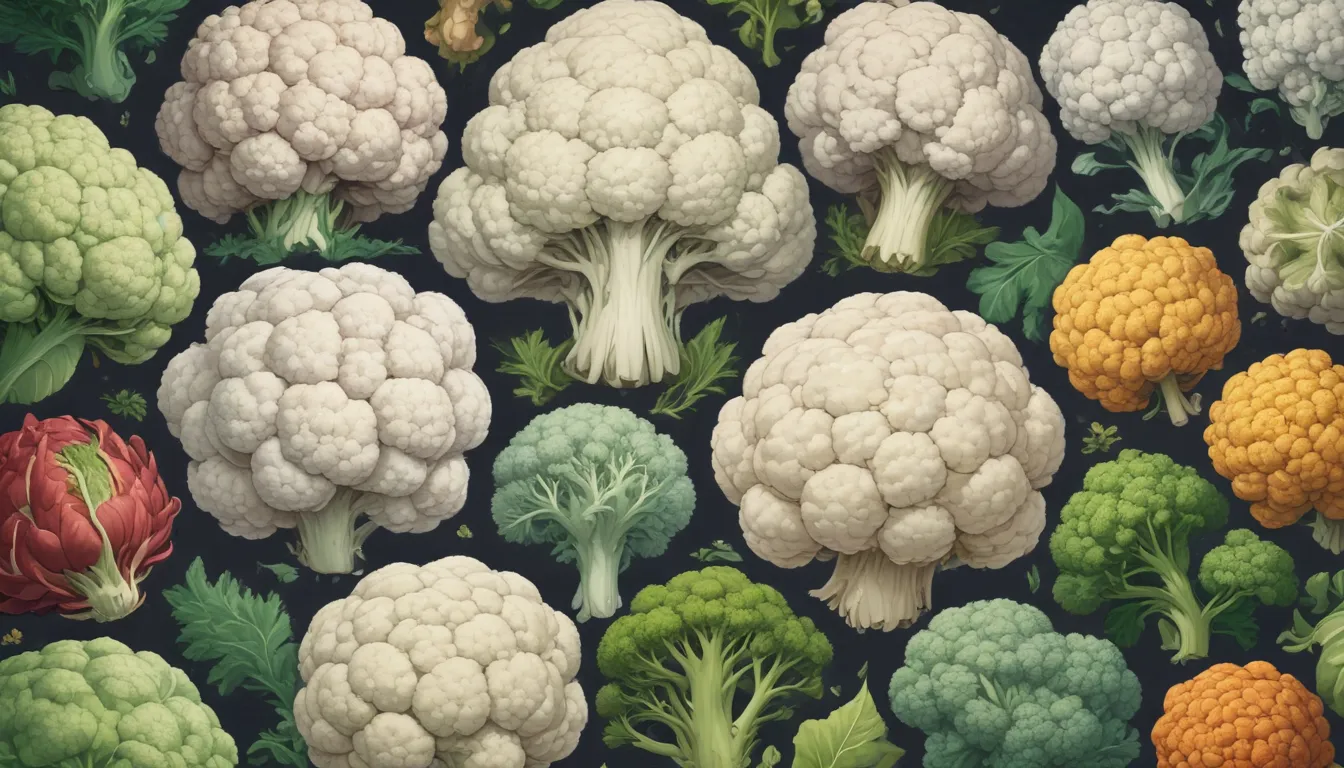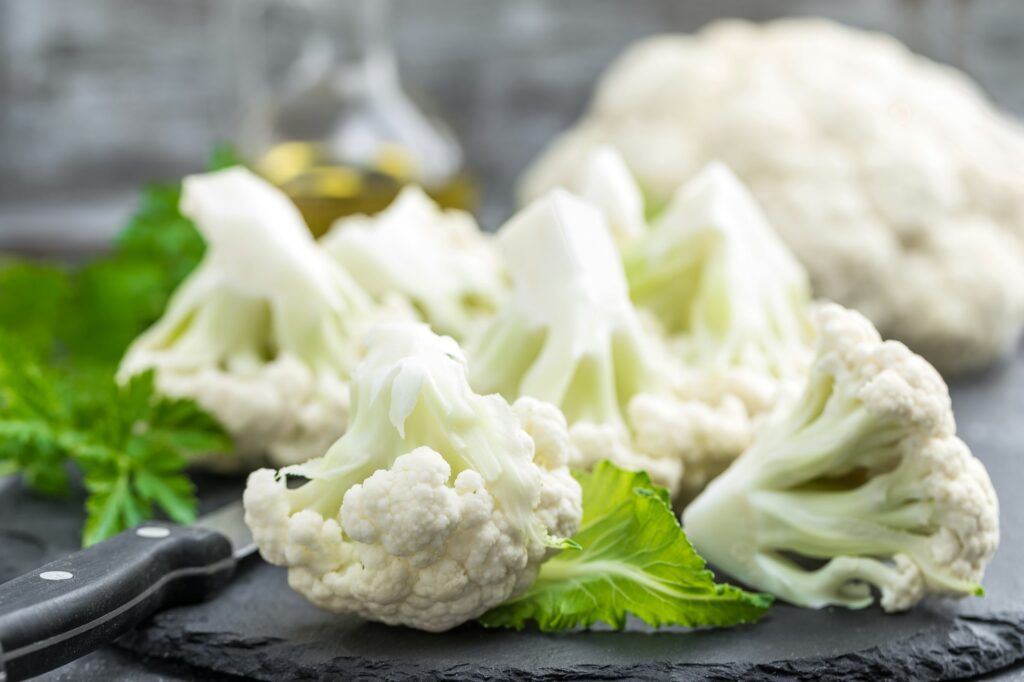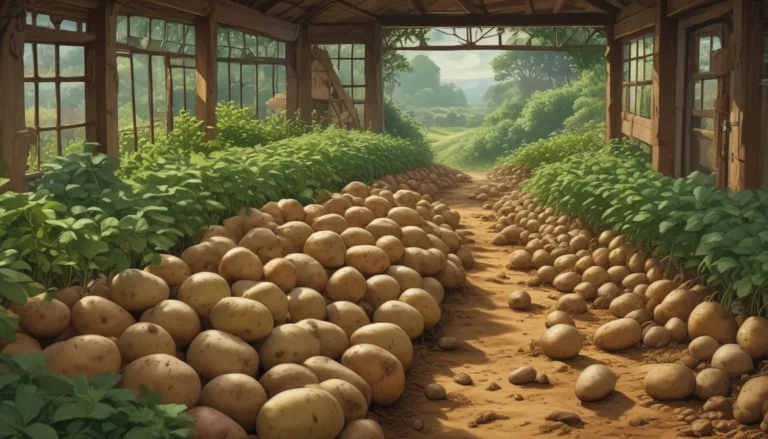Guide to Cauliflower Head Disorders and How to Avoid Them

Introduction
Cauliflower, a versatile and nutritious vegetable, is a favorite among gardeners and consumers alike. However, growing perfect cauliflower heads can be challenging due to various disorders that can affect their development and quality. This comprehensive guide will explore common cauliflower head disorders, their causes, and most importantly, how to prevent them. By understanding these issues, gardeners and farmers can ensure healthier, more abundant cauliflower harvests.
Common Cauliflower Head Disorders

1. Buttoning
Buttoning is a disorder where the cauliflower plant produces a small, button-sized head prematurely. This condition is often caused by exposure to cold temperatures during early growth stages, nutrient deficiencies (particularly nitrogen), transplant shock, or drought stress. To prevent buttoning, it’s crucial to plant at the appropriate time to avoid cold exposure, ensure adequate nitrogen fertilization, harden off seedlings properly before transplanting, and maintain consistent soil moisture.
2. Riceyness
Riceyness occurs when the head develops a grainy or coarse texture, resembling rice grains. High temperatures during head formation, excessive nitrogen fertilization, and harvest delays are common causes of this disorder. To avoid riceyness, plant early enough to avoid high summer temperatures, use balanced fertilization practices, and harvest heads promptly when they reach full size.
3. Browning or Discoloration
Brown spots or overall discoloration can significantly reduce the marketability of cauliflower heads. This issue is often caused by boron deficiency, sunburn, or fungal diseases. Prevention strategies include conducting soil tests and applying boron if necessary, ensuring proper leaf cover through appropriate spacing and tying, and implementing effective disease management practices.
4. Hollow Stem
This disorder is characterized by a hollow area within the main stem of the plant, which can extend into the head. Hollow stem is typically caused by boron deficiency, rapid growth due to excess nitrogen, or an inconsistent water supply. To prevent this issue, maintain balanced soil nutrition (particularly boron levels), avoid over-fertilization with nitrogen, and provide consistent irrigation.
5. Whiptail
Whiptail is a disorder where leaves become deformed, narrow, and strap-like. It’s primarily caused by molybdenum deficiency or acidic soil conditions. To prevent whiptail, test soil pH and adjust it to 6.0-7.0, and apply molybdenum if soil tests indicate a deficiency.
Nutritional Disorders and Their Prevention
Proper nutrition is crucial for developing healthy cauliflower heads. Key nutrients, their roles, and deficiency symptoms include:
| Nutrient | Role | Deficiency Symptoms | Prevention |
|---|---|---|---|
| Nitrogen | Leaf growth, overall plant development | Yellowing of older leaves, stunted growth | Regular fertilization with balanced NPK fertilizer |
| Phosphorus | Root development, energy transfer | Purple tinting on leaves, slow growth | Apply phosphorus-rich fertilizer at planting |
| Potassium | Water regulation, disease resistance | Marginal scorching of leaves | Use potassium-rich fertilizer, especially in sandy soils |
| Calcium | Cell wall strength, new growth | Tip burn, distorted leaf growth | Ensure consistent soil moisture, add lime if needed |
| Magnesium | Chlorophyll production | Interveinal chlorosis on older leaves | Apply dolomitic lime or magnesium sulfate |
| Boron | Cell wall formation, head development | Hollow stem, brown curds | Soil testing and targeted boron application |
| Molybdenum | Nitrogen metabolism | Whiptail, stunted growth | Adjust soil pH, apply molybdenum if necessary |
Environmental Factors Affecting Cauliflower Head Development
Temperature
Cauliflower is sensitive to temperature fluctuations, which can significantly impact head formation and quality. The optimal conditions for cauliflower growth include daytime temperatures of 60-65°F (15-18°C) and nighttime temperatures of 50-55°F (10-13°C). Cold stress can cause buttoning and may lead to premature flowering (bolting), while heat stress reduces head size and quality and can cause riceyness or looseness in curds.
To mitigate temperature-related issues, choose heat-tolerant varieties for warm climates, use row covers or shade cloth during hot periods, and plant early in spring or late in summer for fall harvest.
Water Management
Proper irrigation is crucial for developing high-quality cauliflower heads. Best practices include maintaining consistent soil moisture, watering deeply and less frequently to encourage deep root growth, and using drip irrigation to minimize leaf wetness and disease risk. Poor water management can lead to drought stress, resulting in small, tough heads, or overwatering, which can cause root rot and nutrient leaching.
Light Exposure
While cauliflower plants need full sun for optimal growth, the developing heads benefit from protection against direct sunlight. Blanching techniques include choosing self-blanching varieties that naturally cover their heads with leaves, gently tying outer leaves over the developing head when it’s about 2-3 inches in diameter, or using lightweight materials like newspaper or cloth to cover heads.
Blanching produces white, tender curds, prevents discoloration and off-flavors, and protects against sunburn.
Pest and Disease Management
Protecting cauliflower plants from pests and diseases is essential for producing high-quality heads. Common pests include aphids, cabbage loopers, and flea beetles. Aphids cause curled leaves and stunted growth, while cabbage loopers create holes in leaves and leave frass on plants. Flea beetles are particularly problematic for seedlings, creating small holes in leaves.
Major diseases affecting cauliflower include club root, black rot, and downy mildew. Club root causes stunted growth, wilting, and swollen roots. Black rot presents as V-shaped yellow lesions on leaf edges, while downy mildew creates yellow patches on upper leaf surfaces and gray mold on undersides.
Prevention strategies for pests and diseases include crop rotation, maintaining proper plant spacing, using disease-resistant varieties, and implementing good sanitation practices. Encouraging beneficial insects, using organic pest control methods, and applying fungicides preventatively in high-risk areas can also help manage these issues.
Cultural Practices for Optimal Cauliflower Head Development
Proper Spacing
Adequate spacing is crucial for developing large, well-formed cauliflower heads. Recommended spacing between plants is 18-24 inches (45-60 cm) and between rows is 30-36 inches (75-90 cm). Proper spacing improves air circulation, reduces disease risk, allows better light penetration for leaf growth, and reduces competition for nutrients and water.
Mulching
Applying mulch around cauliflower plants offers several benefits, including moisture retention, weed suppression, soil temperature regulation, and reduced soil splashing, which can spread diseases. Suitable mulching materials include straw, grass clippings, composted leaves, and biodegradable plastic mulch.
Crop Rotation
Implementing a proper crop rotation plan is essential for maintaining soil health and preventing the buildup of pests and diseases. Avoid planting cauliflower or other brassicas in the same location for at least 3-4 years. Rotate with unrelated crops such as legumes, alliums, or nightshades. Consider using cover crops to improve soil structure and add organic matter.
Harvesting for Quality
Proper harvesting techniques are crucial for maintaining the quality of cauliflower heads. Harvest when the head is fully developed but still compact, typically when it reaches 6-8 inches (15-20 cm) in diameter. The curds should be tight and white, without discoloration.
To harvest, cut the main stem about 2 inches (5 cm) below the head. It’s best to harvest in the morning when temperatures are cool and handle heads gently to avoid bruising. After harvesting, cool heads immediately to maintain freshness. Store at 32°F (0°C) with high humidity (95-98%) and use within 2-4 weeks for best quality.
Conclusion
Growing high-quality cauliflower heads requires attention to detail and an understanding of the plant’s specific needs. By focusing on proper nutrition, environmental management, pest and disease control, and cultural practices, gardeners and farmers can significantly reduce the incidence of cauliflower head disorders. Remember that prevention is key – many disorders can be avoided through proactive management and careful planning.
As you apply these guidelines, keep in mind that local conditions and specific varieties may require some adjustments to these general recommendations. Regular monitoring of your cauliflower plants, coupled with soil testing and timely interventions, will help ensure a successful harvest of healthy, well-formed cauliflower heads.
By addressing potential issues before they become serious problems, you can maximize your chances of producing high-quality cauliflower. Whether you’re a home gardener or a commercial grower, these strategies will help you achieve better results and enjoy the rewards of your labor in the form of beautiful, delicious cauliflower heads.





